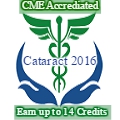
Shiming Wang
Aier Eye Hospital Group, China
Title: The changes of posterior corneal curvature measured by Sirius topography in post Femto second LASIK patients
Biography
Biography: Shiming Wang
Abstract
Purpose: To investigated changes of posterior corneal curvature (ΔK) in post Femto-second LASIK patients using Sirius topography, and to analyze its relationship with ablation percentage, ablantion depth, residual bed thickness and equivalent power. Setting: Ningbo Aier Guangming Eye Hospital and a private practice, Ningbo, China. Methods: Seventy-three post Femto-second LASIK patients (146 eyes; aged19~41 years, mean 23.7±5.1 years; equivalent power , -9.00~-3.00 D, mean-5.21±1.07D) were recruited in this study. The posterior corneal curvature was measured by Sirius topography pre-operatively and at one month post-surgery. The correlation between ΔK and ablation percentage, ablantion depth, residual bed thickness and equivalent power were analyzed. Results: The posterior corneal curvature increased from (-5.89±0.74D) pre-operatively to (-7.01± 0.81D) at 1 month post-surgery. The ΔK was positively correlated with ablation percentage (r=0.213, P<0.05)and ablantion depth (r=0.197, P<0.05). The ΔK was negatively correlated with equivalent power (r=-0.246, P<0.05) and residual bed thickness (r=-0.329, P<0.05. Conclusions: The ΔK is related to ablation percentage, ablantion depth, equivalent power and residual bed thickness. Financial Disclosure: None of the authors has financial interest concerning this study.

